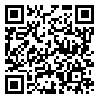Volume 16, Issue 16 (12-2018)
RSMT 2018, 16(16): 51-62 |
Back to browse issues page
Download citation:
BibTeX | RIS | EndNote | Medlars | ProCite | Reference Manager | RefWorks
Send citation to:



BibTeX | RIS | EndNote | Medlars | ProCite | Reference Manager | RefWorks
Send citation to:
Hosseinimehr H, Anbarian M. The effect of shoulder abduction angles, shoulder dominance and non-dominance and external loading on shoulder muscles co-contraction ratio in overhead athletes and non-athletes. RSMT 2018; 16 (16) :51-62
URL: http://jsmt.khu.ac.ir/article-1-332-en.html
URL: http://jsmt.khu.ac.ir/article-1-332-en.html
, hosseinimehrhossein@gmail.com
Abstract: (5727 Views)
The purpose of this study was to compare the effect of shoulder abduction angles, dominant and non-dominant arm and external loading on co-contraction ratio during arm abduction in scapular plane in overhead athletes and non-athletes. 10 swimmers, 10 handball players and 10 tennis players and ten non-athletes voluntarily participated in this study. Electromyography activity of shoulder muscles (middle and anterior deltoid; upper, middle and lower trapezius; infraspinatus, serratus anterior and latissimus dorsi) during dynamic and static arm abduction in 3 different angles (0-45º in 1second and holding it for 3 seconds, 0-90º in 2 seconds and holding it for 3 seconds, 0-135º in 1 second and holding it for 3 seconds) was recorded for dominant and non-dominant arm in loading and non-loading conditions. Co-contraction ratio of shoulder muscles was calculated for both groups. Findings indicated external loading, shoulder dominance and abduction angles had significant effect on shoulder muscles co-contraction ratio during (0-45º, 0-90º, 0-135º) and holding shoulder elevation in scapular plane (45º, 90º, 135º), also there was significant difference in shoulder muscles co-contraction ratio among four groups during and holding elevation in scapular plane (p≤0.05). Significant differences in shoulder muscles co-contraction ratio among athletes group and between athletes and non-athletes may be related to sport demands and adaptation to exercises and extensive use of upper limb as well.
Type of Study: Research |
Received: 2019/06/9 | Accepted: 2019/06/9 | Published: 2019/06/9
Received: 2019/06/9 | Accepted: 2019/06/9 | Published: 2019/06/9
Send email to the article author
| Rights and permissions | |
 |
This work is licensed under a Creative Commons Attribution-NonCommercial 4.0 International License. |






